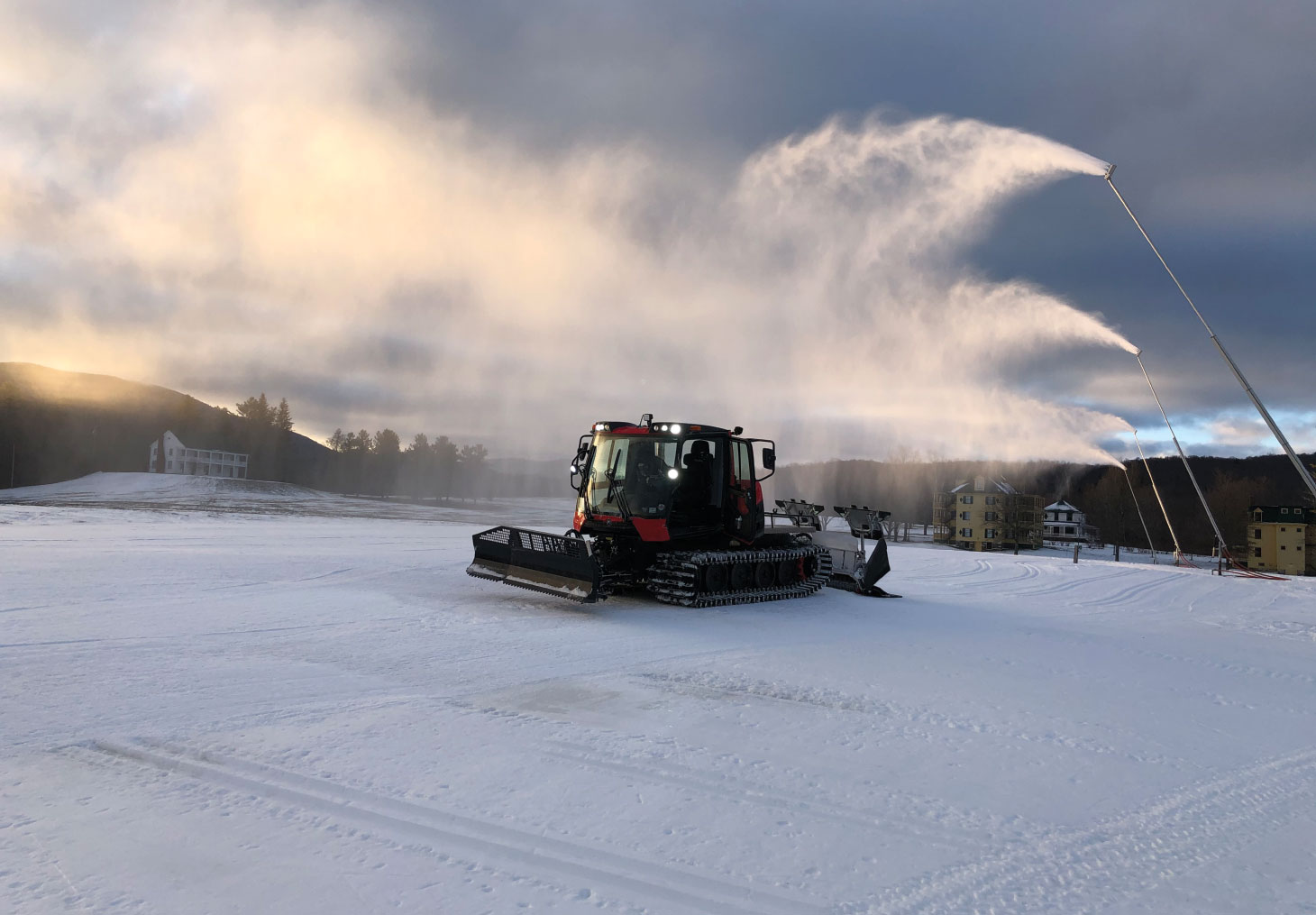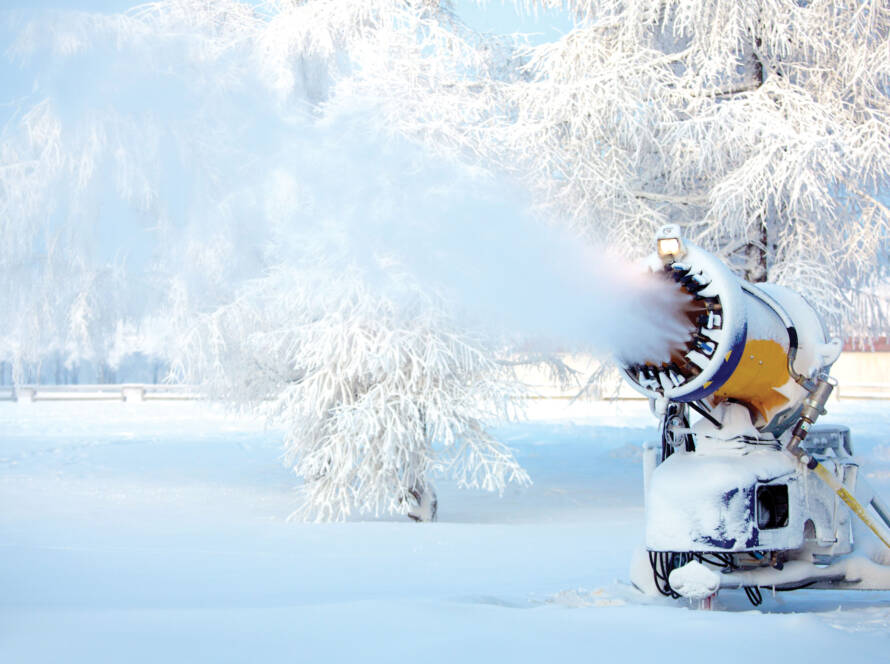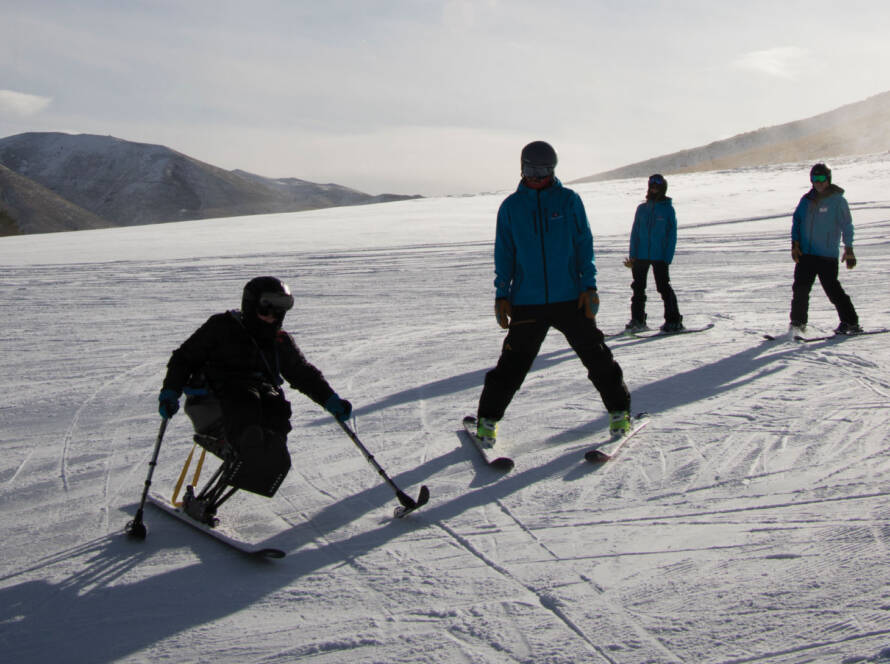In 2012, cross-country ski areas across New England – Vermont in particular – had one of their worst snow seasons in recent memory. Temperatures were well above average from October to May, precipitation was well below average and as a result, snowfall was also well below average – down by 49 percent at The Bolton Valley Resort, for example.
Meanwhile, at the Woodstock Inn & Resort in Woodstock, Vt., there were less than 50 skiable days. In fact, the ski season was only salvaged that year by the area ski destinations that invested in one thing – snowmaking.
One such destination was Rikert at Middlebury College, a Division 1 ski school with a Nordic Center in Ripton, Vt. Rikert installed a five-kilometer snowmaking system for its trails within the year. It was the largest snowmaking system in the northeastern United States at the time, and today, it’s one of at least 11 snowmaking systems in the area.
“For Rikert, the 5K system has been amazing,” said Michael Hussey, Rikert’s general manager. “We went from 70 days of helter-skelter skiing – open-close-open-close – to 140 days consistently in one year.”
Hussey was indirectly aided in his purchase of the snowmaking system through the knowledge gained by his membership to the non-profit Cross-Country Ski Areas Association (CCSAA).
“They just provide a lot of education on snowmaking and are sensitive to the snowmaking needs of their members,” said Hussey.
Established in 1973, after former U.S. Olympic cross-country skier and skiing administrator Joseph Peter “Joe Pete” Wilson called a meeting of 25 ski areas in Woodstock and suggested they unite as a professional network. In 1977, this collective became the National Ski Touring Operators Association, representing the cross-country skiing industry across North America. Now, as CCSAA, they represent ski areas, retailers and suppliers with just under 200 members and a total reach of over 100,000 people. CCSAA’s stated goal is to promote the growth and improve the quality of cross-country ski operations.
Besides the Covid-19 pandemic, and going toward a post-pandemic future, the biggest factor affecting the quality of cross-country ski operations is climate change and the need for quality snowmaking and grooming.
SnowOps asked some of the top snowmakers in the sport about when the need for snowmaking become apparent. The answers were anywhere between 10 and 30 years ago and yet, it’s only been in the last five years or so that snowmaking has been on the radar of cross-country ski area operators; and CCSAA is one of the big drivers of that.
“We have a few snowmaking members and we work with them to provide education on snowmaking, as well as simple, scalable systems that are appropriate for a smaller ski area. These are systems where they can start with one or two guns and scale up every year when they have a few more dollars to add a few more guns,” said Reese Brown, executive director of CCSAA, who also admits that cross-country skiing has been 20 years behind alpine skiing in accepting snowmaking.
One of the reasons is the cost. Though on the rise and having the benefit of supremely dedicated practitioners, the popularity of cross-country skiing is dwarfed by alpine skiing. As a result, many cross-country ski areas, especially the smaller ones, cannot afford many of the snowmaking systems available.
“Snowmaking is a clear challenge for the entire industry and one of those challenges is the financial side of it and trying to right-size your snow management to fit what you’ve got and try to maximize your season, no matter if it’s a long one or a short one,” said Richard Hodges, Nordic director at White Pine Touring Nordic Center in Park City, Utah, and board chairman for the CCSAA.
In terms of cost, Rikert spent $800,000 on its 5K system in 2012, which put snowmaking pipe around five kilometers of trail. Most of that cost comes from the pump capacity and compressor size. The pipe part of it can be added to every year. Of course, piping is only one technique, the other is investing in a large to mid-size snow gun and blasting snow into a pile that is subsequently moved across the trail by a grooming vehicle. Cross-country skiing can afford the time it takes because it’s a sport that needs a much smaller snow coverage area than alpine skiing – a kilometer at minimum.
Still, on the high end, a Prinoth or PistonBully snow machine to move snow can cost half a million dollars, while, on the low-end, a heavy-duty snowmobile can still cost between $15,000 and $20,000, which is why CCSAA works with organizations that provide grants for snowmaking.
“Snowmaking is on everyone’s mind, but many have not done it yet, even though it will become increasingly important,” said Brown, noting that the snowmaking seminars CCSAA puts on every year are always the most well attended because people want to know how to do it and what’s available.
Even if a cross-country ski area operator is not quite ready to invest fully in snowmaking, they’re probably doing something similar in their snow management to Nick Mahood, a former cross-country skiing coach who is now the director of Woodstock Nordic at the Woodstock Inn and Resort. Mahood feels the resort is about a year away from fully investing in snowmaking, but that doesn’t mean he’s not mitigating the effects of climate change.
“We’ve invested heavily in summer work on our trail. We just finished a huge project working on drainage, so we don’t have wet spots on our trail and its graded smoother, so you can get away with a lot less snow. We also work really hard in the winter to farm snow from wherever we can and transport it with our snowcat to fill in holes and fill in depths on the trails,” said Mahood.
Woodstock Inn recently purchased a Prinoth snowcat and Mahood says the grooming component of CCSAA’s annual conference went a long way in helping him decide what was needed for the resort.
“You have the opportunity to talk to the sales reps from the various companies there, you have an opportunity to demo some of the equipment and really dive in and talk to these guys and gals that are running the equipment, so it absolutely went into the decision,” he said.
Meanwhile, beyond helping with members’ snowmaking and grooming needs, there are several other benefits to joining CCSAA for those who are a part of the cross-country skiing industry.
“You are listed in our directory on both our consumer-facing and industry-facing websites, but the most important thing we do is provide that community element for ski areas to talk to each other. It’s an avenue for sharing ideas, challenging problems and opening up that conversation,” said Brown.
This sense of community was displayed early on during the Covid-19 pandemic, when CCSAA hosted weekly calls where they brainstormed how they could safely move forward as an industry in the face of the pandemic, even developing safe ways to run cross-country ski areas that members could take to their local governments.
Since one of the tenants of CCSAA’s mission is to raise the profile of the sport in a “stronger together” type of way, Brown is also using that sense of community to seed stories about cross-country skiing in leading media outlets, such as The Wall Street Journal. He’s also using the community’s collective power to conduct industry research since cross-country skiing doesn’t get the attention of alpine skiing in that regard.
“We’re moving forward into next year with a really strong research program, so we can better understand our industry and look at ways to help our ski areas make more money with what they’re already doing,” said Brown.
CCSAA strives to answer research questions like: How are processes streamlined? How is retention improved? How are customers reached and programming tailored based on the current audience?
If it seems like a lot that’s because it is, but even as CCSAA already provides these intangible benefits to its members, Brown says the organization is still going further.
“We’re actually about to go out to our membership and say, ‘Okay, here’s what we are doing – what else do you want?’ The education piece, like the grooming clinics we run, is pretty good, but the real benefit is being able to talk to members who have similar issues to what you’ve got – that communication is key.”
Any company that is in the snowmaking and snow grooming industry and would like to get in on CCSAA’s annual conference or would like to put together an educational presentation of their own can contact Reese Brown at reese@xcski.org.


